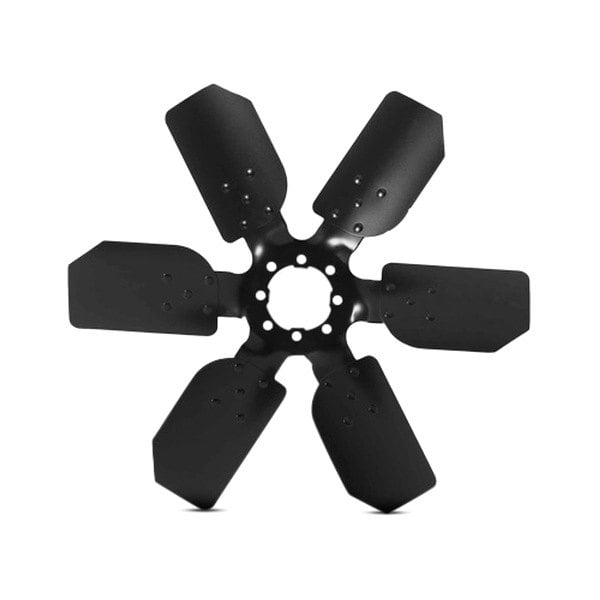All About Fan Blades
Table of ContentsThe 20-Second Trick For Fan BladesFan Blades Fundamentals ExplainedSome Ideas on Fan Blades You Need To KnowSome Known Details About Fan Blades
As engine temperature level increases, try to find a sudden jump in fan speed. Some electronic testing and knowledge of a scan tool may be needed to detect electronic fan clutches and the sensing units used to identify fan engagement. The internal combustion engine generates a lot of heat, which the engine cooling system is tasked with moderating. fan blades.
On the other hand, too much heat can be a huge problem, melting non-metal engine parts and rendering lubricating oil useless. An overheating engine could literally bond itself into scrap metal. If your fan clutch has actually gone bad, replace it as quickly as possible to avoid engine damage. While you're at it, think about the efficiency and fuel economy benefits of updating to electrical cooling fans.
The state of California requires that this warning be posted for individuals purchasing items that reside in California. WARNING: Products may consist of one or more chemicals known in the State of California to cause cancer and/or birth defects or other reproductive harm (fan blades). For more information, visit www. P65Warnings.ca. gov Fan to clutch: 17 feet lbs Clutch to water pump: 41 feet lbs Engine fan clutch on recreational vehicle 8.
You're crawling along in traffic and, despite the fact that your pickup bed is empty, the coolant temperature is uncomfortably high. Then you realize that the a/c unit is blowing warm. You switch off the a/c and open the windows simply as the traffic breaks and you accelerate. The coolant temperature drops.
The Main Principles Of Fan Blades
In the house, you lift the hood, puzzled. The coolant level is ideal on, no hose pipes are dripping and the accessory belt is intact. You start the engine, let it idle and make a visual assessment. There's no sign of belt slippage, however the radiator cooling fan hardly appears to be spinning.
If your truck is like a lot of, the cooling fan is installed to its drive sheave via a clutch. Clutch fans run at different speeds under different conditions to assist lower drain on the engine and to conserve fuel. When the engine is hot, the clutch fan runs click now almost as quick as the engine.
The hotter air causes the thermostatic spring to unwind and open the valve. Silicone fluid from the reservoir chamber flows into the primary chamber, engaging the clutch, and the fan spins quicker (though it's still a little slower than the engine). A damaged or weakened thermostatic spring in the clutch hub can not be replaced or repaired Silicone fluid exuding past the bearing seal indicates the clutch should be changed.
To confirm the diagnosis, moved here begin with this basic test: Spin the fan as difficult as you can on an engine that has actually not been started that day. If the fan rotates more than five times, you can wager the clutch is bad. You ought to feel some resistance and the fan may spin as much as 3 times, depending upon the ambient temperature level.
Not known Incorrect Statements About Fan Blades
You need to do more tests. A couple of late-model pickups and SUVs, such as Ford diesels and the Chevy Pioneer and others with the 4. 2-liter inline Six, have actually a digitally managed valve for the fan clutch. In these vehicles, the silicone fluid doesn't drain pipes back overnight, so the fan might hardly spin on a cold engine.
If your fan clutch is not operating the way it should, it's most likely due to a fluid leak or a bad thermostatic spring or valve. When a leakage occurs, it's at the bearing seal, at the center back of the clutch. Run your finger around the joint and if you get a big dollop of black goo, that's silicone fluid that has dripped from the housing.
A light smear of silicone fluid could be regular seepage-- no seal is perfect. Obviously, if a considerable quantity of fluid is missing out on, the clutch will not spin as quickly as it should. As for the other potential culprit, many stopping working thermostatic springs open the valve too quickly. This premature clutch engagement means the fan spins faster than it should, however that does not make the engine or a/c run hot.
Let's state spinning the fan didn't reveal a problem, there's no leak and you believe the spring more tips here is alright. You could still have a bad valve. Here's how to discover out. You'll require to evaluate the temperature level of the air moved by the fan using a probe-type thermometer that checks out to at least 220 F, ideally to about 250 F.

Fan Blades for Dummies
